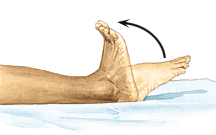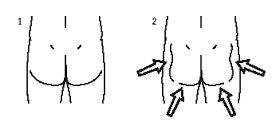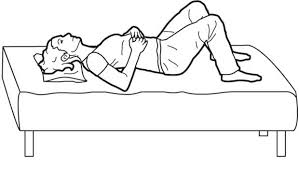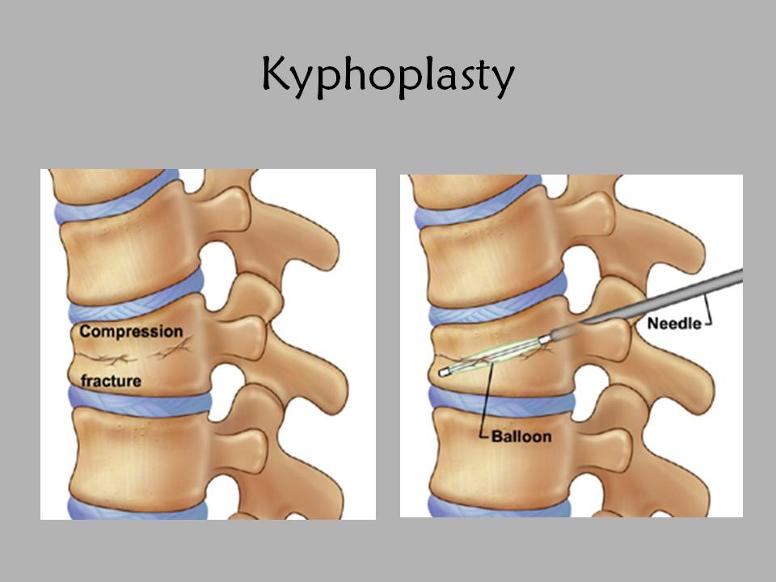Osteoporosis, injury and cancer can cause painful compression fractures in the spine. Kyphoplasty is the surgical treatment needed for this type of condition. It involves injection of a special kind of cement into the vertebrae, which helps relieve pain and restore the spine's height. Though this surgery sounds scary, it is usually quite safe. Then how about recovery from the surgery?
Kyphoplasty Recovery Time
The procedure is guided by imaging devices, so there is minimal injury to the tissues. The cement hardens within about 15 minutes. Most patients are able to do gentle daily activities in a week. Pain decreases rapidly and you will barely need pain medicines in two weeks. However, bone specialists say that it takes about 12 weeks for the vertebrae to heal completely after kyphoplasty.
Hospital Discharge
Right after the procedure, you will be monitored for 2-3 hours in the recovery room before you are finally discharged from the hospital. You will be advised to move the back carefully. If you experience extra pain or any problem after kyphoplasty, you may be advised to stay overnight in the hospital.
Rehab instructions from a specialist in Physical Medicine and Rehabilitation may be given before you go home. You will be allowed to go home after kyphoplasty if you are able to ambulate, eat, and urinate.
Kyphoplasty Recovery at Home
Kyphoplasty recovery time involves bed rest for 24 hours right after surgery to make sure that the bone cement solidifies properly. However, you may be allowed to get up and go to the bathroom. From then on, you will have to gradually increase your activity levels by walking around your home. Here are more tips:
- Avoid strenuous activities such as swimming, running or golfing.
- Avoid lifting objects that weigh more than 10 lbs.
- Avoid lifting objects above waist level or above the head, especially for long periods.
- Avoid driving a car. However, you can ride along as a passenger.
- You may cautiously climb stairs at home.
- You may engage in sexual activity if permitted by your doctor.
- Schedule follow-up appointments with your doctor.
- Eat a normal diet. If you have stomach upset, try to eat bland and low-fat foods such as rice, toast, broiled chicken, and yogurt.
- Avoid bending from the waist because this strains the back muscles. Instead, bend your knees or squat to pick up objects from below the waist.
- Avoid sitting in soft chairs. Use a firm chair with a straight back, which gives better support.
- Try to keep your bandage dry when showering. In the shower, use a rubber mat to avoid slipping.
- Your doctor may instruct you to use elastic stockings during kyphoplasty recovery time to prevent deep vein thrombosis (development of blood clots in your legs). These are often worn for 6 weeks after the surgery.
Wound Care
- Use the shower, but avoid using bathtubs, swimming pools or whirlpools.
- Cover your wound incision using steri-strips (or strips of tape), as directed by your doctor.
- If your tape gets wet, you can use hair dryer on cool setting to blow the tape.
- Avoid using creams or lotions near the incision site.
Medicines
- Follow your doctor’s instructions when taking medicines.
- If you have been taking blood thinners like warfarin, clopidogrel, or aspirin before surgery, ask your doctor when you can start taking them again.
- Take your pain medicines only as prescribed.
- Avoid taking two or more medicines for pain at the same time unless instructed by your doctor.
When to Call the Doctor
Call your doctor immediately if you experience:
- Wound swelling
- Red, hot skin, or wound drainage
- Chest pain
- Difficulty breathing
- Swelling/tenderness in the legs
- High fever
- Loss of bladder/bowel control
Rehab Exercises After Kyphoplasty
To optimize your rehabilitation during kyphoplasty recovery time, you need to do some exercises at home, at least 3-4 times daily. Ask a physiotherapist for proper instructions about these exercises:
1. Ankle Pumps
 Lie down on a firm bed or floor.
Lie down on a firm bed or floor.- Straighten your legs; then bend ankles up and down.
- Do these 15 times.
2. Static Gluts
 Lie down on a firm bed or floor.
Lie down on a firm bed or floor.- Tighten your buttock muscles. Hold for 5 seconds, and then relax.
- Do these 10 times.
3. Quadriceps Setting
 Lie down on a firm bed or floor.
Lie down on a firm bed or floor.- Straighten your legs; then tighten the front thigh muscles and push the back of your knees into the bed. This results in straightening of your knees.
- Hold for for 5 seconds.
- Do these 15 times.
4. Trans Abdominal Setting
 Lie on your back with knees bent.
Lie on your back with knees bent.- Breathe in, and then breathe out, pulling gently up and in from below your belly button.
- Keep breathing regularly as you hold the muscle in.
- Hold the contraction for 5 seconds.
- Do these 10 times.

